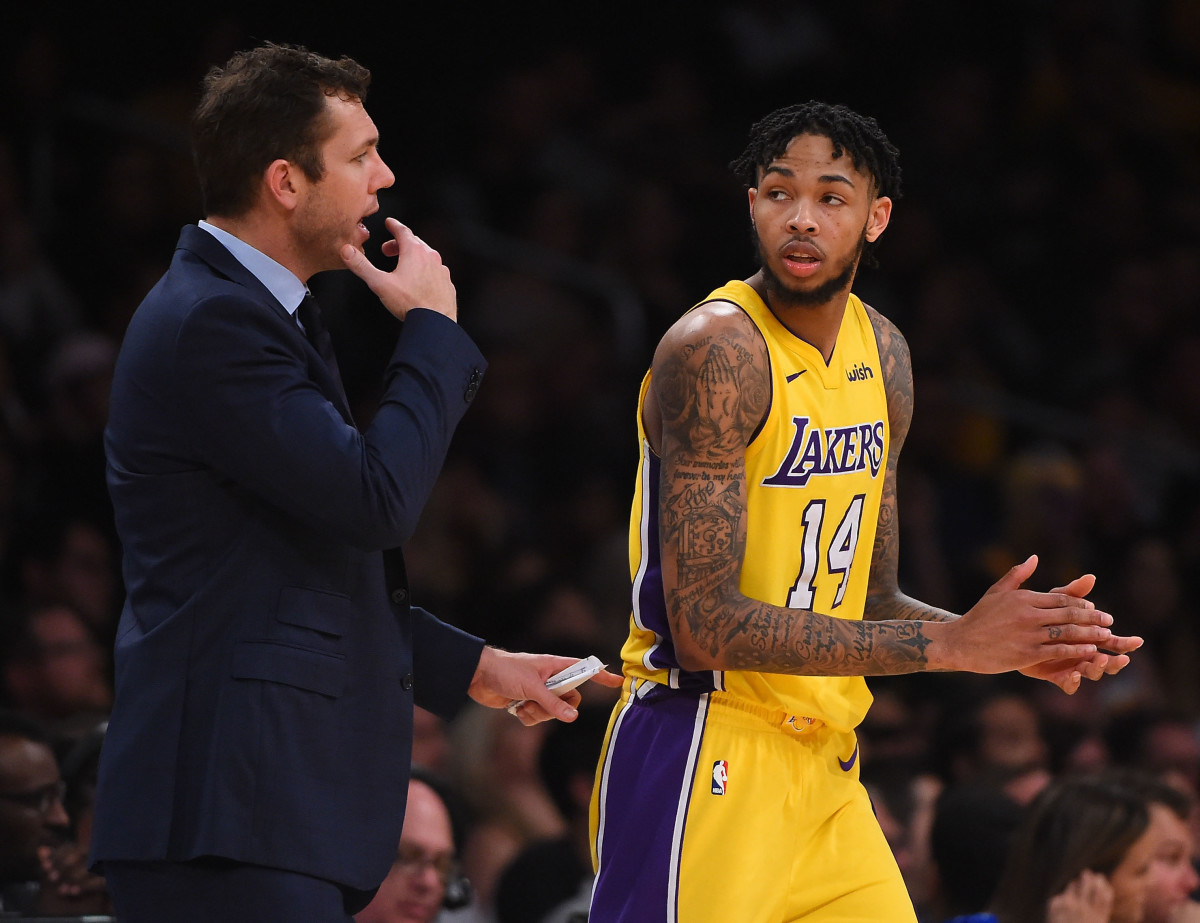When LeBron Joined the Lakers, Everything Changed for Brandon Ingram

Everything changed for Brandon Ingram when the Lakers put the ball in his hands. There had always been opportunities for Ingram to create, but never quite so consistently or quite so explicitly as when Luke Walton made the second-year forward a part-time point guard. "When Luke gave me his vision, he just told me he wanted me to be aggressive," Ingram told CBS Sports last season. "Always, whether it's driving to the basket for myself or creating for my teammates. He just wanted me to try to push the pace and be who I am."
Or, perhaps, to become something more. As a rookie, Ingram would often drift out of focus when not directly involved in a play's progression—as if fading into the background on the weak side. Entrusting Ingram with more creative responsibility was a means of engagement. Every touch was a tether to the moment, demanding of Ingram a presence and focus that didn't always come naturally.
LeBron James’s Best Response to Donald Trump Was None At All
From that sense of direction came the best stretch of Ingram's impressive sophomore season. Next comes the more complicated work of learning to live without it. LeBron James is a Laker, which is to say that the offense is his. It might begin with Rajon Rondo or Lonzo Ball, but the Lakers did not pursue the best player in basketball so that he might sit idle. He is at the center of the frame, the core of every concept. Your entire universe changes the moment that LeBron commits to play for your team.
Those like Ingram are left to deal with the developmental whiplash. The appeal of an up-and-coming point forward is offset by the arrival of the definitive version. After all, why would a decorated team with winning priorities invest so much for Ingram to do things that James can do better? This is the fundamental conundrum of LeBron. No superstar brings greater scrutiny, largely because none has the same effect. Yet because of that scrutiny, LeBron's teams tend to lean on his scoring and playmaking to an untenable degree. That most any team would welcome that dilemma doesn't make it any less of one.

To put it plainly, there is nothing quite like playing with LeBron. What touches Ingram gets next season will come through a very different course. Many more of them will be secondary actions—quick, decisive extensions of a play already made. The physical location of Ingram's shots and moves could change as a result, tilting his game away from the middle of the floor and more toward the wings. Opportunities to survey the floor will likely be all but gone. So much of Ingram's involvement stands to change, from timing to placement to utility.
All of which will bring Ingram's off-ball limitations to the fore. Ingram was empowered to create for himself partly as a developmental exercise, but also because his skill set pointed naturally in that direction. His cuts aren't ineffective so much as inorganic. His perimeter shooting isn't without promise, though its promise has yet to pay off. Passivity is the byproduct of a player—through a lack of instinct or experience—not quite understanding how to consistently put their skills to practice. Ingram, like so many 20-year-olds before him, suffers for it.
Ingram is where the theory of building a team around James veers from the reality. So versatile is LeBron that any sort of player should fit alongside him. Shooters eat well off of James's crosscourt passes. Bigs and cutters find vacated lanes to the rim in working off of LeBron's drives. Other creators, too, have become collaborators—Dwyane Wade and Kyrie Irving chief among them. Ingram floats between those possibilities, teasing at all of them but fulfilling none. It's one thing to intrigue, but quite another to offer real, tangible benefit to a team in the heat of contention. Soon Ingram will learn the difference.
